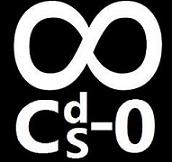In this post, I want to take a critical approach to the method that I have utilized to obtain the force plots that I have shown in the previous posts. To do this, I will list the process that I have followed and the assumptions that I've done to obtain these plots:
- First, I obtained a mathematical relation between the foot angle and the crank arm angle based on a 60fps video of a random cyclist pedaling round at an aproximated cadence of 60rpm. Both the method used to calculate the angles and the fitting routine induced errors.
- Next, I used previously published data of tangential and normal forces at pedals of a cyclist pedaling at 84rpm in order to obtain a mathematical expression of these two components of the force.
- Following, I calculated the x and y components of the force at pedals using the mathematical expression obtained previously and the relation between the foot angle and the crank arm angle. Doing this, I assumed that: 1) the pedaling style of both cyclists is the same and that 2) in the 60-84rpm range, the relation between angles is constant. This two considerations are questionable and they will modify to some extent the final result.
- Finally, I used vectorial decomposition to obtain all the other plots.
In the two following plots you can see some small errors induced by this method:
The correlation between the plots that I have posted and previously published data of pedaling forces at lower wattages is good so I will consider my results as valid. If I don't found pedal force profiles for higher wattages I will scale these ones to replicate higher load cases. Considering the variety of different pedaling styles and some of the testing methods utilized in the industry, I think that this approach is solid. Obviously, putting a professional sprinter in a ergometer pedaling at different power oupouts and positions will be a better way to obtain these forces profiles but that isn't an option for me. Finally, a last graphic of the pedal force components that a crank arm must resist for the indicated power outpout (radial force sign defined by the theory of elasticity):
That's all for today. Greetings




No comments:
Post a Comment